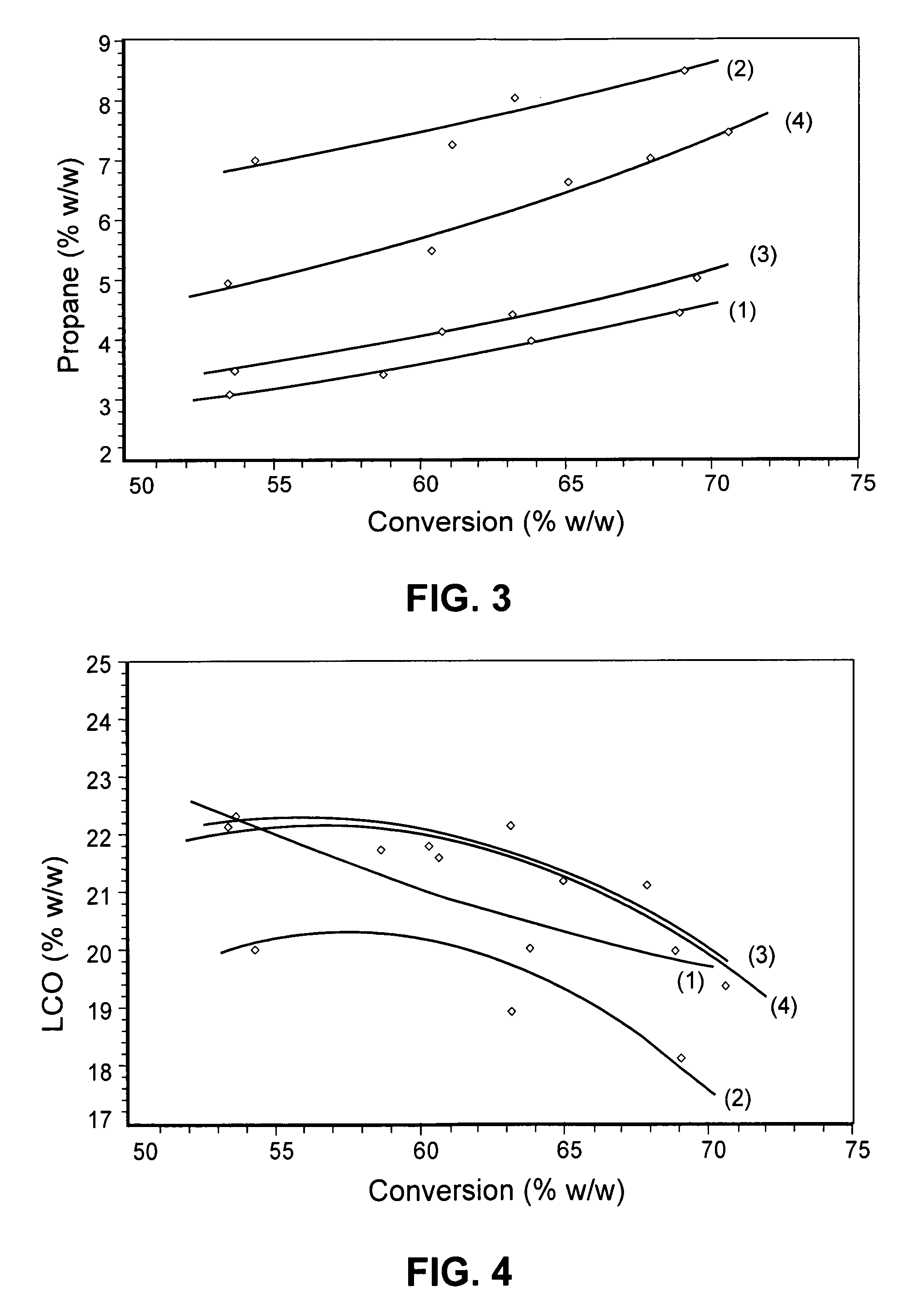Catalytic system and additive for maximisation of light olefins in fluid catalytic cracking units in operations of low severity
- Summary
- Abstract
- Description
- Claims
- Application Information
AI Technical Summary
Benefits of technology
Problems solved by technology
Method used
Image
Examples
example
[0031]The examples below are illustrative having the objective of demonstrating the intrinsic capacity of the zeolite FER to achieve the aforementioned performance without restricting the band of contents of FER and ZSM-5 to be applied. The zeolites were mixed with the catalyst and tested in an ACE unit in conformity with the standard test protocol of said unit. The reaction temperature adopted was 500° C. to simulate a low-severity operation, different catalyst / oil ratios being established based on adjustment of the time of injection of the sample.
[0032]The principal evaluation was of the effect of such zeolites on yield and quality of the LCO. The base catalyst employed was a commercial equilibrium catalyst, MFCC-1, having a formulation appropriate for the operation of maximisation of middle distillates. The respective zeolites were mixed pure with the base catalyst. Table 1 shows a summary of the experiments carried out. The feedstock utilised was a heavy vacuum gas oil. Tables 2...
PUM
 Login to View More
Login to View More Abstract
Description
Claims
Application Information
 Login to View More
Login to View More - R&D
- Intellectual Property
- Life Sciences
- Materials
- Tech Scout
- Unparalleled Data Quality
- Higher Quality Content
- 60% Fewer Hallucinations
Browse by: Latest US Patents, China's latest patents, Technical Efficacy Thesaurus, Application Domain, Technology Topic, Popular Technical Reports.
© 2025 PatSnap. All rights reserved.Legal|Privacy policy|Modern Slavery Act Transparency Statement|Sitemap|About US| Contact US: help@patsnap.com



